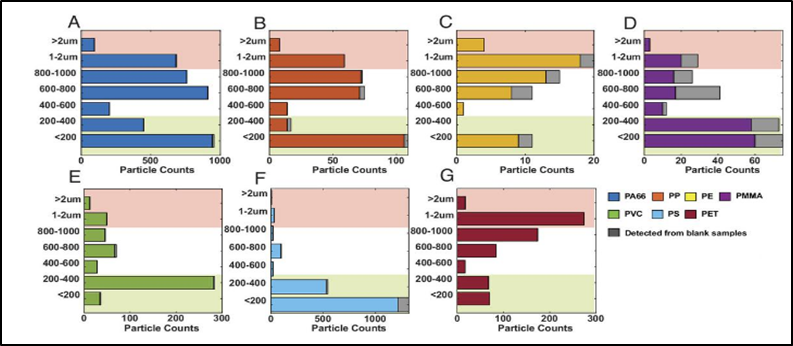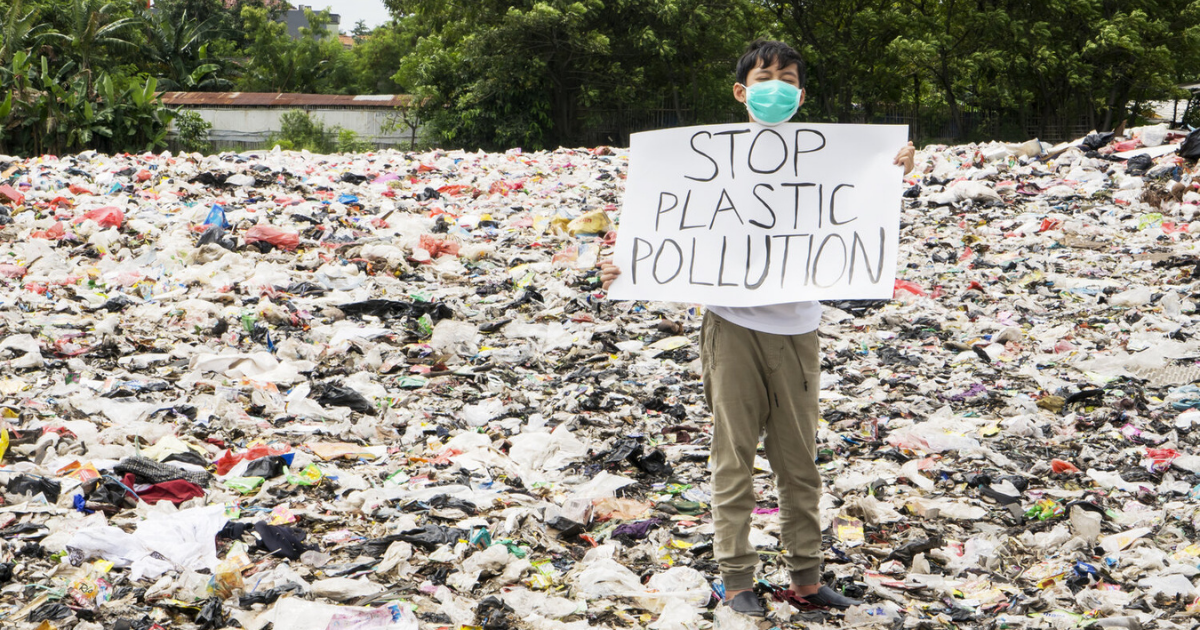Context-
Plastic pollution has emerged as a significant environmental concern, with microplastics infiltrating ecosystems worldwide. A recent study conducted by scientists at Columbia University in New York looks into the realm of nanoplastics, revealing their prevalence in bottled water. Published in Proceedings of the National Academy of Sciences on January 8, 2024, the study utilized innovative techniques to analyze and identify micro- and nano-plastic particles in water samples, shedding light on a previously hidden aspect of plastic pollution.
The presence of plastic particles in bottled water has raised concerns about human health and environmental sustainability. Despite efforts to mitigate plastic pollution, the full extent of nanoplastic contamination remains poorly understood. The study aimed to address this gap by employing advanced imaging techniques to analyze micro- and nano-plastic particles in bottled water samples.
Analyzing Nanoplastics: Challenges and Methodology
Nanoplastics present unique challenges in analysis due to their minuscule size and the limitations of conventional diagnostic techniques. Traditional methods such as Fourier transform infrared spectroscopy and Raman microscopy have lower instrumental resolution and detection sensitivity, hindering the accurate identification of nanoplastic particles.
To overcome these challenges, the study utilized a custom hyperspectral stimulated Raman scattering (SRS) imaging platform. This advanced setup allowed the researchers to capture detailed images of molecules at various wavelengths, providing insights into the chemical composition of plastic particles. By developing an automated algorithm, the research team could identify and characterize individual plastic particles based on their unique spectral signatures.
The SRS microscopy technique relies on the Raman effect, where atoms or molecules scatter light in different directions upon exposure to specific frequencies. By harnessing this phenomenon, the researchers could distinguish plastic particles from other contaminants present in the water samples. The development of the automated algorithm further facilitated the rapid and accurate identification of plastic particles, enabling comprehensive analysis at the nanoscale.
Findings and Implications
Each liter of bottled water contains nanoplastic particles. About 90% of these particles are nanosized, posing a higher risk to human health. Nanoplastics are even smaller than microplastics, ranging below 1 micrometer in size. Unlike microplastics (ranging between 5 millimeters and 1 micrometer), nanoplastics can move from the intestines and lungs directly into the bloodstream before reaching the heart and brain.
The investigation revealed staggering concentrations of micro- and nano-plastic particles in bottled water, far surpassing previous estimates. With approximately 2.4 lakh particles per liter, the study underscored the prevalence of nanoplastics, which accounted for 90% of the total particles identified. These findings suggest that experts may have underestimated the extent of microplastic contamination in bottled water, highlighting the urgent need for further research and mitigation efforts.
Moreover, the study unveiled a diverse array of plastic compositions present in the water samples, including polyamide 66, polypropylene, polyethylene, polymethyl methacrylate, polyvinyl chloride, polystyrene, and polyethylene terephthalate. The intricate relationship between particle composition, shape, and size underscored the complexity of plastic pollution and its implications for environmental and human health.

Nanoplastics pose significant challenges due to their ability to infiltrate biological barriers and potentially enter various organisms' bodies. Studies have shown that plastic items can degrade into sub-micrometer pieces, raising concerns about their impact on ecosystems and human health. The pervasive nature of nanoplastics underscores the urgency of addressing plastic pollution at its source and implementing effective waste management strategies.
Addressing Knowledge Gaps and Future Directions
The study's utilization of advanced imaging techniques represents a significant step forward in nanoplastic research. By bridging existing knowledge gaps and uncovering previously invisible particles, the research contributes to a deeper understanding of plastic pollution dynamics. Moving forward, interdisciplinary collaboration and continued technological advancements will be crucial in addressing the multifaceted challenges posed by nanoplastics.
Furthermore, the study underscores the importance of regulatory frameworks and international standards in combating plastic pollution. Establishing comprehensive guidelines for plastic production, usage, and disposal can help mitigate environmental contamination and safeguard human health.
Conclusion
In conclusion, the study's findings underscore the pervasive nature of nanoplastic pollution in bottled water and its broader implications for environmental and human health. By leveraging innovative imaging techniques, the research provides valuable insights into the complex dynamics of plastic pollution at the nanoscale. Addressing this multifaceted challenge requires concerted efforts from scientists, policymakers, and society as a whole to develop sustainable solutions and mitigate the adverse effects of plastic pollution on our planet.
|
Probable Questions for UPSC Mains Exam- 1. How do the minuscule size and chemical composition of nanoplastics present distinctive challenges in environmental analysis, specifically concerning the contamination of bottled water? (10 Marks, 150 Words) 2. What are the broader implications of the study's findings regarding the significant concentrations of nanoplastics in bottled water for human health and the sustainability of ecosystems? (15 Marks, 250 Words) |
Source- The Hindu







